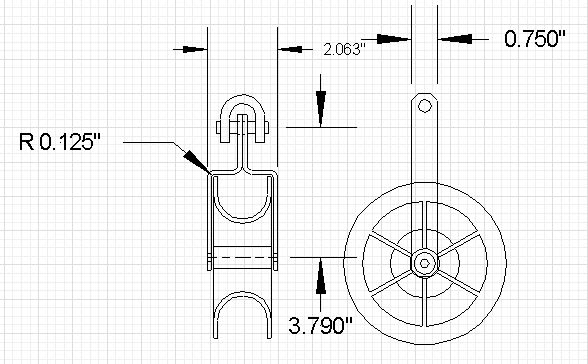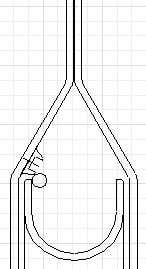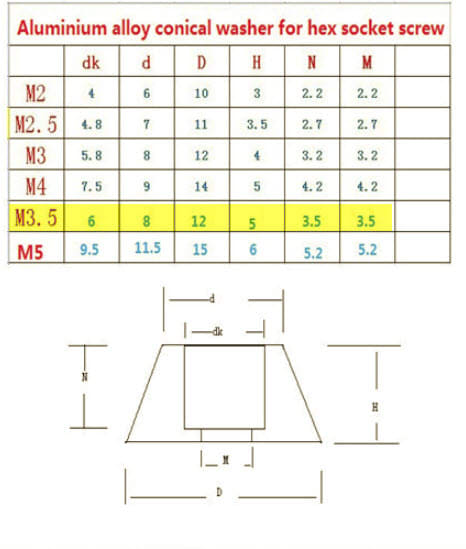.125” Mill Aluminum 5052
1T bend radius's
I have put my entire weight on the assembly at 220 lbs (using 6063 T5 extruded) with no visible deformation. Just curious at what load they will unbend with the 5052 (without spring-back).
Trying to decide between .125" 5052 or 12Ga CR steel. Corrosion resistance vs strength. There should really never be any more than 100 Lbs of dynamic load on the pulley but curious as to what load will destroy the brackets if abused. If I had a pull scale I could test but I don't.
The reason for the 90's vs a shallower z like 45's is to keep cables from getting between the bracket and the spool.
Thanks

1T bend radius's
I have put my entire weight on the assembly at 220 lbs (using 6063 T5 extruded) with no visible deformation. Just curious at what load they will unbend with the 5052 (without spring-back).
Trying to decide between .125" 5052 or 12Ga CR steel. Corrosion resistance vs strength. There should really never be any more than 100 Lbs of dynamic load on the pulley but curious as to what load will destroy the brackets if abused. If I had a pull scale I could test but I don't.
The reason for the 90's vs a shallower z like 45's is to keep cables from getting between the bracket and the spool.
Thanks



